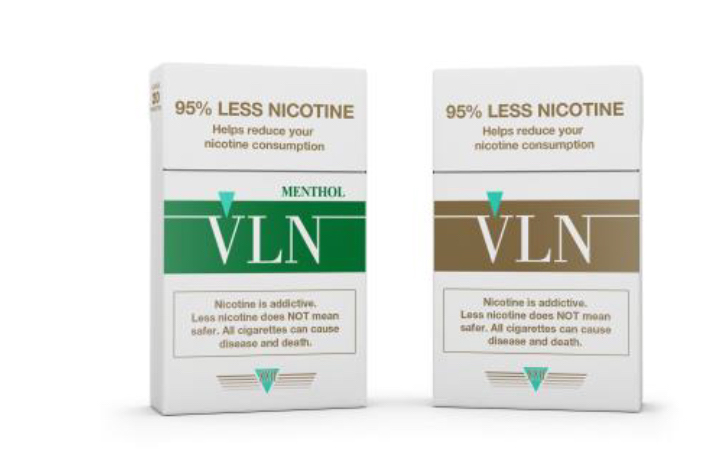Authorized by the FDA and put on sale this month, the genetically modified cig is designed to help people reduce or cease their smoking
By Jason Langendorf
Cigarettes marketed as items that can help people reduce smoking, which were authorized by the Food and Drug Administration (FDA) last December, went on sale for the first time earlier this month.
VLN King and VLN Menthol King cigarettes, manufactured by the 22nd Century Group using genetically modified tobacco plants that produce less nicotine, are the first combustible cigarettes authorized by the FDA and are marketed as products that help smokers reduce or cease their tobacco consumption.

“We know that three out of four adult smokers want to quit, and the data on these products show they can help addicted adult smokers transition away from highly addictive combusted cigarettes,” said Mitch Zeller, director of the FDA’s Center for Tobacco Products.
VLN products, which the 22nd Century Group says contain 95% less nicotine than traditional combustible cigarettes, hit the Chicago market after 20 years in development and 10 years of clinical trials. The manufacturer is pursuing registration in all 50 states and has plans for a national launch after its three- to six-month pilot program in the Chicago area.
The key questions: Are these new cigarette alternatives actually “safe?” And might they, for some, ultimately serve as a gateway to nicotine cigarettes?
A Lingering Cause of Death
Cigarette smoking remains the leading cause of preventable disease, disability and death in the U.S. —more than 480,000 deaths every year, which amounts to about 1 in 5 of the total fatalities— according to the Centers for Disease Control and Prevention (CDC). But the percentage of smokers has declined among the U.S. population in recent years, dropping from 20.9% of adults in 2005 to 12.5% in 2020.
“Cigarettes of today have two fundamental flaws: One of them is they’re harmful because they’re smoked products, and second is they’re highly addictive because nicotine is delivered at high levels into the lungs.”
—John Pritchard, 22nd Century Group
John Pritchard, vice president of regulatory science for 22nd Century Group, admits that the inhalation of combustible cigarettes has adverse health effects. But he alludes to a level of harm reduction provided by VLN products, due to their relative absence of nicotine.
“Cigarettes of today have two fundamental flaws: One of them is they’re harmful because they’re smoked products, and second is they’re highly addictive because nicotine is delivered at high levels into the lungs,” Pritchard said. A VLN cigarette is “still combusted—it is still smoked—but the public health disaster really comes from a combination of both those fundamental flaws.”
Still, it would seem a far cry to call VLN cigarettes “safe.” There is also the matter of whether they may open the door to nicotine use—and the traditional harms of smoking—for some.
Vaping and e-cigarette products—which were initially marketed as smoking alternatives, and in some cases even cessation solutions—have proven to cause their own health issues.
“They’ve morphed into a kind of separate, unique product category that is now being targeted, marketwise, to young adults,” said Ryan Vandrey, PhD, professor of psychiatry and behavioral sciences at Johns Hopkins University, discussing e-cigarette products. “And it is actually a gateway to people coming on to and using combustible tobacco.”
FDA authorization should not be viewed as an incontrovertible sign of safety, and a monthslong pilot program is hardly enough time to learn much about the real-world effects of VLN products before they hit the national market. If they help ween a significant number of smokers off nicotine cigarettes, they will have done their job. Let’s hope that’s all they do.














